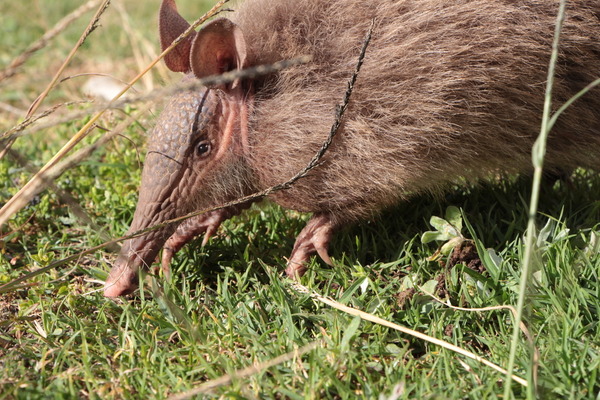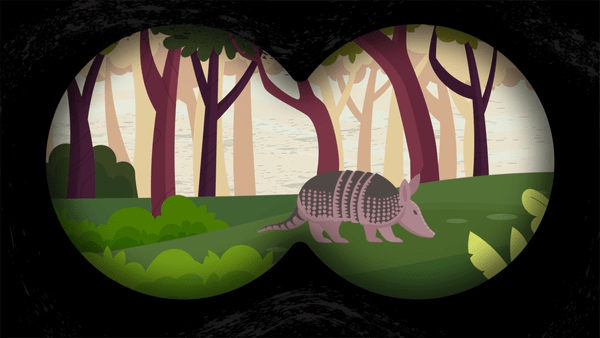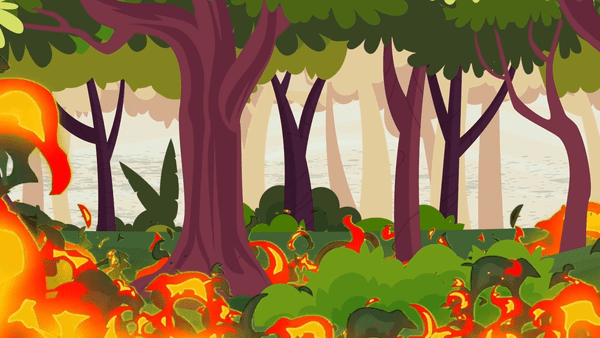
Hairy long-nosed armadillo
Dasypus pilosus
Reproduction: Nothing is known about the reproductive strategy of this species. It probably has 4 offspring per litter.
Weight: 1–1.5 kg
Diet: Generalist insectivore

Common Names
English – Hairy long-nosed armadillo
Spanish – Quirquincho Peludo, Tatú Peludo, Mulita Peluda, Armadillo Peludo
German – Pelzgürteltier
French – Tatou à Long Museau Velu
Portuguese – Tatu-Peludo
How to Identify:
Carapace Looks very different to other long-nosed armadillos due to the thick reddish tan to reddish gray hair that covers its carapace, cheek, and the upper part of its limbs. Moveable bands 9-11 Ears 5 cm Tail 23–31 cm
IUCN Red List
Species are classified into one of nine Red List Categories: Extinct, Extinct in the Wild, Critically Endangered, Endangered, Vulnerable, Near Threatened, Least Concern, Data Deficient and Not Evaluated. Vulnerable, Endangered and Critically Endangered species are considered to be threatened with extinction.

Hairy long-nosed armadillo Facts
- This is the only Dasypus species with thick fur.
- At first look you may not recognize it as an armadillo! This is because you can’t see the carapace under that much fur.
- Only exists in Peru!
- Known from only a few records
Habitat
- Subtropical mountain forest
 Population Trend
Population Trend
• Unknown
 Threats
Threats
- Deforestation
- Hunting
Here are some ways YOU can help keep armadillos healthy and safe:
– It is best to observe them from a distance and in silence.
– Our pets could attack them. It is important to keep your dog on a leash when you go for a walk, or keep your pets at home in an enclosed and safe area. In addition, taking care of our pets also means spaying and neutering them so that they do not breed without control.
– Another way to help protect the areas where armadillos live is by not starting fires.
– Armadillos love to live in nature, keeping them as pets is not good for them. Keep in mind that they don’t like selfies either.
– If you find an injured armadillo, contact a wildlife hospital so they can help it.
– Deforestation is often caused to make more land for livestock. Eating less meat may help save our forests.
Dasypus pilosus can be found in the below country.
Click to learn what other xenarthran species live there too!
Test your new knowledge!
Test your new armadillo expertise by visiting our armadillo word search, puzzles, coloring sheets and name games!
Check out this video to see how much you have learned!
The Anteater, Sloth, Armadillo Specialist Group has a store that directly helps xenarthran conservation!


 Population Trend
Population Trend Threats
Threats











